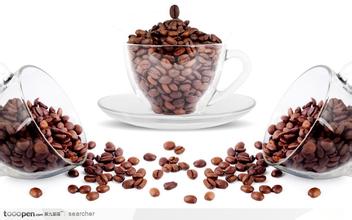Characteristics of coffee flavor and taste in Lazmus Manor, Colombia, with rich taste and endless aftertaste.
In his letter from Jamaica in 1815, Bolivar envisioned that when South America was liberated from Spanish colonial rule, New Granada and Venezuela should form a country, named Colombia. In August 1819, Bolivar's Patriotic Army defeated the Spanish colonial army at the Battle of Boyaca and liberated Bogota. As a result, New Granada and most of Venezuela have been liberated. With the consent of the patriotic army and people of New Granada, Bolivar proposed in the Venezuelan Congress held in Angostura in December of the same year that Venezuela and New Granada unite to form a unified country. On December 17, Congress passed a resolution formally establishing the union of the two regions.
Greater Republic of Columbia
Greater Republic of Columbia
The Republic of Colombia. In May 1821, the State of Colombia held a Constituent Assembly in Kukuta, the interim capital, which adopted and promulgated the first Constitution of Colombia on August 20. The Constitution provides for a centralized republic and a series of decrees declaring the abolition of slavery, the liberation of slaves and their children, the prohibition of slave trade, and the equal rights of citizens, with freedom of speech and the press. The meeting elected Bolivar as the first President of the Republic and Santander as Vice President. In May 1822, General Bolivar Sucre led the army to liberate Quito, and then Ecuador announced to join the Republic of Colombia at the beginning of the 20th century. Colombia's economy developed, coffee and oil production increased, the textile and food industries developed, and transportation improved. In November 1903, the United States instigated Panama's independence from Colombia (see Panama's independence). At the same time, the United States and Britain invested heavily in Colombian oil, railways and coffee and banana plantations to plunder Colombia's wealth. After the outbreak of the capitalist world economic crisis in 1929, Colombia's exports of coffee and oil decreased, making people's lives even more difficult. In July 1930, the Communist Party of Colombia was founded. In the same year, E. Oraya Herrera was elected president (1930-1934).
After the Liberal Party returned to power, it implemented some reforms under the pressure of the people. a. During Lopez Pumareho's first reign, the Constitution was amended in 1936: defining the principle of separation of powers and implementing direct elections; abolishing the Catholic Church's monopoly on education; stipulating that workers have the right to strike and freedom to choose their careers; the government recognizes the ownership of farmers' occupation of private wasteland and stipulates the maximum working days and unemployment benefits for workers. During the second World War, due to the decrease in imports of industrial products and the increase in coffee exports, Colombia's industry and agriculture developed, the country's gold reserves increased, and the working class grew. After the outbreak of the Pacific War in December 1941, Colombia severed diplomatic relations with Japan and declared war on Germany in November 1943.
Colombia, located in the northwest of South America, is a beautiful country with a long history. Indians have lived on this land since ancient times. It was colonized by Spain in 1531 and gained independence in 1819. It was renamed in 1886 to commemorate Columbus, the discoverer of the American continent. In 1808, a priest introduced coffee to Colombia for the first time from the French Antilles via Venezuela.
Colombia has four treasures: flowers, gold, emeralds and coffee. You can see the importance of coffee Colombia. And there may be very few coffee in the world named after a country, such as Nestle Coffee and Blue Mountain Coffee are not named after a country. Colombia is the first country to use the name of the country as a brand of coffee. Colombian coffee is famous for its quality, taste and high taste. Colombia's coffee production plays a very important part in the country's economic life, with annual exports of about US $1.5 billion, accounting for a large proportion of its foreign trade. Colombia has beautiful mountains and rivers, beautiful scenery, pleasant climate and spring all year round. the air is fresh and refreshing. Colombia's mild climate, humid air, and diverse climate make it a harvest season all year round, with different kinds of coffee ripening at different times. What they grow is Arabica coffee beans of unique quality, and the coffee made from this coffee bean has a rich taste and endless aftertaste, which can be called fine coffee. Nowadays, many people equate "Colombian coffee" with "high quality" and "good taste". Colombian coffee is divided into more than 200 grades, that is to say, the coffee is very regional. The country's coffee-producing areas are located in the Andes, where the climate is mild and the air is humid. Colombia has three Codiera mountains running north and south, right into the Andes. Coffee is grown along the highlands of these mountains. The mountain steps provide a diverse climate, where the whole year is the harvest season, and different kinds of coffee ripen at different times. And fortunately, unlike Brazil, Colombia doesn't have to worry about frost. There are about 700 million coffee trees in Colombia, 66% of which are planted in modern plantations and the rest on small traditional farms.

- Prev

Introduction to the coffee flavor and taste characteristics of Esmeralda Manor in Panama
Panama is located in the isthmus of Panama in Central America, bordered by Colombia to the east, the Pacific Ocean to the south, the map of Panama to Costa Rica to the west and the Caribbean Sea to the north. The territory is S-shaped to connect North and South America, and the Panama Canal connects the Atlantic and Pacific oceans from north to south. It is known as the bridge of the world. [5] Panama has a land area of 75517 square kilometers.
- Next

Bright and lively acidity of Panamanian Caesar Louis Manor Coffee
The national emblem of Panama was launched in 1904. The national emblem of Panama is a brown eagle with its head held high and its wings. The national emblem of Panama stands on top of the national emblem with a white ribbon with a Panamanian motto for the benefit of the world. In the middle of the national emblem is the brown isthmus of Panama, the blue Pacific and Caribbean seas and the Panama Canal that connects them; under the blue sky, a bright round
Related
- Does Rose Summer choose Blue, Green or Red? Detailed explanation of Rose Summer Coffee plots and Classification in Panamanian Jade Manor
- What is the difference between the origin, producing area, processing plant, cooperative and manor of coffee beans?
- How fine does the espresso powder fit? how to grind the espresso?
- Sca coffee roasting degree color card coffee roasting degree 8 roasting color values what do you mean?
- The practice of lattes: how to make lattes at home
- Introduction to Indonesian Fine Coffee beans-- Java Coffee producing area of Indonesian Arabica Coffee
- How much will the flavor of light and medium roasted rose summer be expressed? What baking level is rose summer suitable for?
- Introduction to the characteristics of washing, sun-drying or wet-planing coffee commonly used in Mantenin, Indonesia
- Price characteristics of Arabica Coffee Bean Starbucks introduction to Manning Coffee Bean Taste producing area Variety Manor
- What is the authentic Yega flavor? What are the flavor characteristics of the really excellent Yejasuffi coffee beans?

